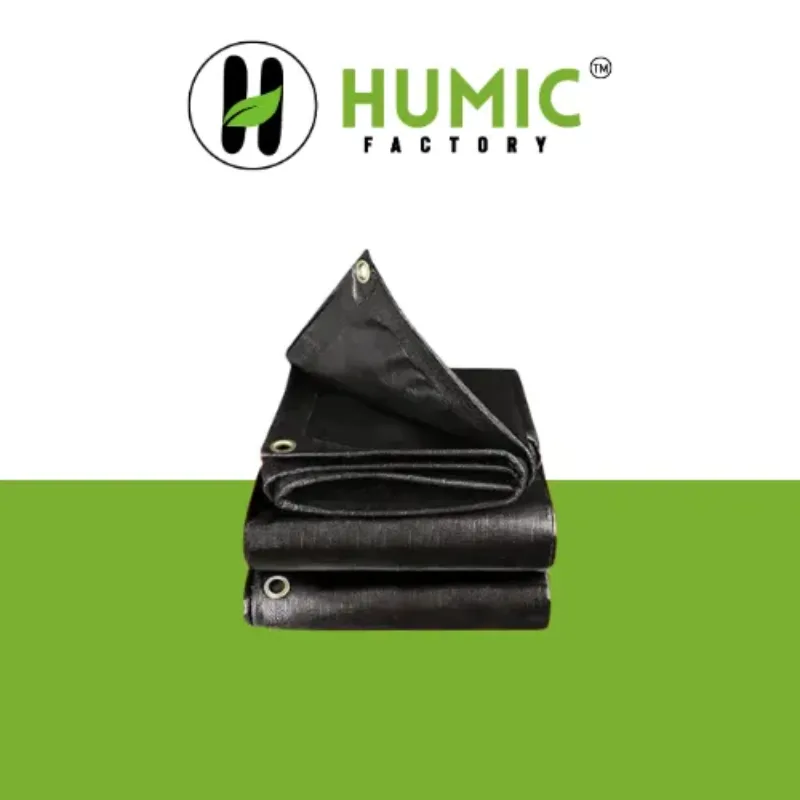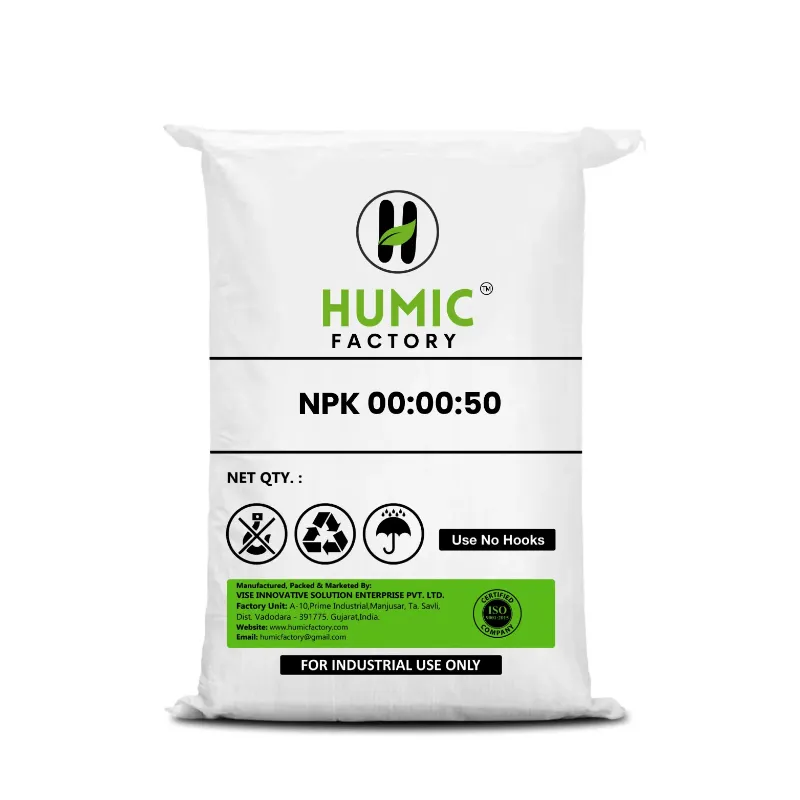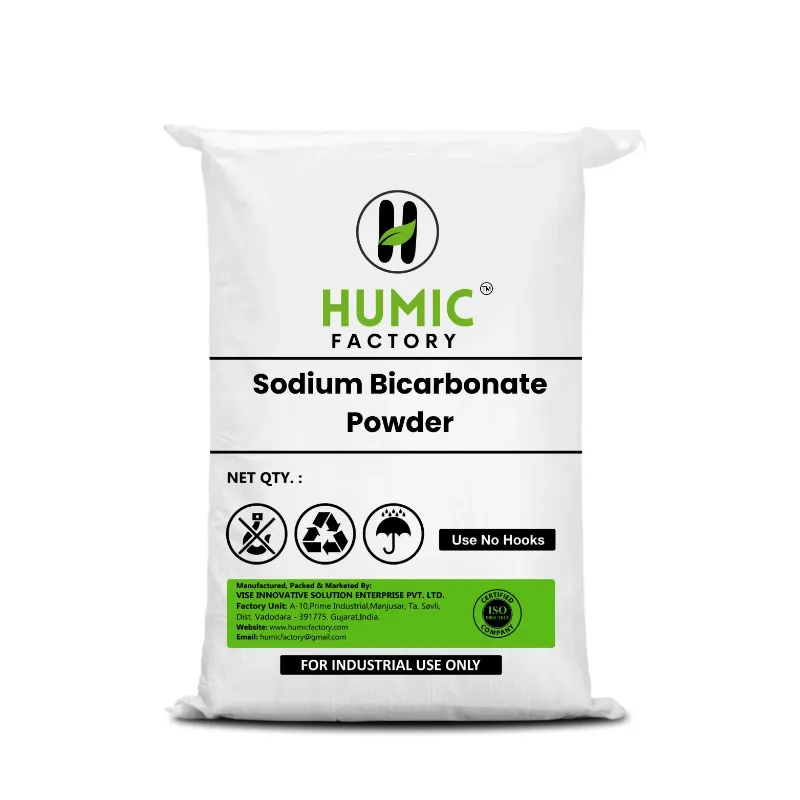Seaweed extract is a naturally derived product from nutrient-dense marine algae (seaweed) that can enhance plants and has been used in agriculture for many years, similar to how millets have been used in Indian kitchens to nourish crops in a gentle, chemical free way. Seaweed extract for plants contains growth hormones, trace minerals, and natural enzymes which support soil health, increase plant immunity, and stimulate root growth and flowering.
Each millet variety has different health benefits and so does each variety of seaweed extract.
1. Kelp Extract (Brown Seaweed): Kelp is one of the better known forms of liquid seaweed extract and is full of natural cytokinins and auxins. Kelp encourages root growth, facilitates nutrient uptake and aids the recovery process when your plants become stressed due to severe heat or dry weather.
2. Red Seaweed Extract (Carrageenan Source): Red seaweed extract can provide antioxidants and trace minerals that augment cell integrity and disease suppression. Red seaweed can be helpful if you want to strengthen immunity and tolerance in your field crops of fruits and vegetables.
3. Green Seaweed Extract (Ulva and Sea Lettuce): Green seaweed extracts encourage chlorophyll development and higher levels for photosynthetic capacity. With this type of seaweed extract, crops can provide more yield as leaf area and enhance quality control by promoting color and robustness in the plant.
4. Blended liquid seaweed extract: In many cases, products may consist of two or three species of seaweed to help balance nutrient contents to create a wider complement of synergy and combinations. Blended seaweed extract can provide better potential in terms of product efficacy at all developmental stages of crops, from seedling, green leaf, flowering and flowering with harvest.
Introduction to Seaweed Extract and Its Importance
Like millets are a natural gift for baby food, seaweed extract is nature’s booster for plants, soil, and even human health.
Seaweed extract is made from marine algae (like kelp) that has been a part of human nutrition and healing in many cultures for thousands of years. Seaweed looped up in blue, green, or brown with a good source of nutrition is now seeing mass popularity for farming, skin care, and wellness due to its nutrient density, eco-friendly nature, and versatility.
What Is Seaweed Extract and How Is It Made?
Seaweed extract is liquid that is made from a variety of types of seaweeds, primarily brown algae like kelp, Laminaria, or Ascophyllum nodosum.
Seaweed is harvested from clean ocean waters and processed to make an extraction using a cold or heat extraction method. The result is any selection of liquid or powder with:
- Natural growth hormones (cytokinins, auxins)
- Trace minerals (magnesium, zinc, boron)
- Amino acids and vitamins
- Plant support enzymes and antioxidants
The most common and popular format is liquid seaweed extract. Liquid seaweed extract is the easiest to apply, the fastest to react, and is compatible with organic and conventional farming systems.
Importance of Seaweed Extract for Health, Skincare, and Farming
There are seaweed extract benefits in many areas of life—whether that is, improving crop growth
For Farming: Using seaweed extract for plants has been shown to improve root growth, increase flowering, improve nutrition uptake and help plants withstand drought and stress—at a natural expense. It also contributes to soil health by feeding beneficial microbes.
For Skincare: Seaweed has wonderful antioxidant and hydrating properties that help with collagen production, reduce inflammation, and brighten skin, making it a wonderful ingredient in modern skincare.
For Human Health: When used as a dietary supplement (especially through edible seaweeds), seaweed offers iodine, fiber, and key nutrients that support thyroid function and assist with digestion.
The Major Types of Seaweed Extract You Should Know
Similar to other millets and their physiological roles of nutritional importance, various species of seaweed extract provide unique benefits for plant development and farm health.
Brown, red and green seaweed contain many different combinations of nutrients, minerals and hormones, thus waterproof seaweed extract for plants provide a versatile and valuable farm input.
Below is a breakdown of common seaweed extract sources and the many benefits they offer.
Brown Seaweed Extracts (Ascophyllum nodosum, Laminaria digitata)
Brown seaweeds are the most used of the seaweeds in agriculture, and the base for most commercially available liquid seaweed extract products.
- Ascophyllum nodosum: Brown seaweed collected from the North Atlantic Ocean that is rich in natural plant growth hormones (cytokinins, auxins), mannitol and trace elements. This species promotes root, shoot, flowering and fruit development.
- Laminaria digitata: A brown seaweed harvested primarily in the northern hemisphere, this species found in colder ocean waters is rich in alginates and iodine. The alginates in Laminaria digitata improve stress tolerance for plants. Growth promotion involves improving soil microbial activity, and maintaining moisture in dry conditions.
Benefits: As among the best for promoting root systems, returning higher yields, and increases drought tolerance and plant biomass yield. I use brown seaweed extract when I want to talk plant.
Red Seaweed Extracts (Carrageenan, Dulse, Nori)
Red seaweeds are not often used for agriculture but do have incredible beneficial properties that can condition soil and boost plant immunity.
- Carrageenan (Chondrus crispus): a well-known gelling agent, carrageenan extract improves the texture and water retention of soil and acts as a very mild stimulant for plants.
- Dulse (Palmaria palmata): this seaweed provides potassium, magnesium, and iron in abundance and is great for increasing leaf strength and boosting chlorophyll production.
- Nori (Porphyra): being more often consumed as food, the extract from nori provides antioxidants and helps prevent plants from suffering oxidative stress.
Benefit: The extractions of red seaweed can help promote plant immunity, improve nutrient balance and are useful for crops stressed by environmental conditions like leafy vegetables.
Green Seaweed Extracts (Ulva, Spirulina, Chlorella)
Green seaweeds are high in nutrient density and are now more commonly found blended into seaweed extract for plants to increase chlorophyll production that can increase plant growth.
- Ulva (Sea Lettuce): Contains iron, magnesium, and protein-building amino acids. Leaves plants with healthy growth and helps in photosynthesis.
- Spirulina (Blue-Green Algae): A cyanobacteria, Spirulina can also be seen as a superfood for plants. It can raise immunity, increase microbial activity within the soil and roots.
- Chlorella: Chlorella Extract has detoxifying properties that will aid soil structure and nutrient availability.
Benefit: Green seaweed extracts are great for early stage of plant development, building lush green plant foliage and increasing microbial balance within the soil.
Different crops, soil structures, and stages of farming require different types of seaweed extract. The variety of liquid seaweed extract is wide, so if using liquid seaweed extract for leafy greens, fruit crops, or flowering plants, understanding what variety works best for your production will get the most out of your field naturally and effectively.
Seaweed extract for plants is not one size fits all, and by understanding the types of seaweed extract, is the first step in more smarter and greener farming.
Seaweed Extract for Plants: A Natural Growth Enhancer
Like millets provide growing babies the building blocks they need to thrive, seaweed extract provides crops a natural boost through their entire growth cycle. Seaweed extract is derived from marine algae is harvested from the ocean, environmentally safe, and serves as a plant tonic which has natural growth hormones, minerals, vitamins, and enzymes.
Seaweed extract for plants can make them grow better and quicker whether you are growing veggies, fruits, grains, or flowers. Seaweed extract for plants will help them grow stronger, healthier, and more robust.
Why Seaweed Extract Is a Powerful Bio-Stimulant
Seaweed extract not only supplies plants with nutrients like chemical fertilizers but takes it one step further by acting as a bio-stimulant and interacting with your plants in a deeper biological context. As a bio-stimulant, seaweed extract helps plants with their natural biometric functions--improving metabolism, uptake of nutrients, and hormonal activity.
Here are some reasons why seaweed extract can be so effective:
- Seaweed contains auxins and cytokinins that promote root growth and new shoot growth.
- Enzymes that introduce greater photosynthetic rate and energy production within the plant.
- Trace elements such as iron, magnesium, and zinc introduce a natural defence mechanism for the plant.
Seaweed extract for plants should be an essential part of modern, sustainable agriculture.
Liquid Seaweed Extract for Soil and Foliar Applications
Liquid seaweed extract is the most convenient form for farmers and gardeners. It’s easy to mix with water and can be applied in different ways:
Liquid applications ensure nutrients reach the plant efficiently—making liquid seaweed extract ideal for both small farms and large-scale operations.
Boosting Yield and Soil Health with Seaweed Fertilizers
Consistent use of the seaweed extract is not only beneficial to the plant but it also changes the soil.
It feeds soil microbes and establishes a rich microbial ecosystem that breaks down organic matter more efficiently.
- It improves the soil structure and retains moisture during dry seasons.
- It lowers the use of synthetic fertilizers lowering input costs and chemical load on the field.
- It improves crop yield through disease suppression, improved flowering, and better uniform fruiting.
- Farmers using seaweed extract for plants often report better crop quality, better shelf life and greater market value making it a natural win-win situation.
No matter the type of seaweed extract that you select, whether it is kelp, red or green seaweed extract every drop gains a healthier soil and better crops.
The world is moving towards cleaner farming practices and liquid seaweed extract is probably a simple, effective, and environmentally friendly option.
Health and Wellness Uses of Seaweed Extract
If millets are soft and nourishing to babies, then seaweed extract is for adults, inside and out, gentle and nourishing.
While primarily known for agriculture, seaweed extract is the new up-and-coming ingredient in nutrition and wellness. Seaweed extract is a natural source of iodine, antioxidants, vitamins, and detoxifying
agents, and consumers can now find seaweed extract as a supplement in functional foods and in natural modalities worldwide.
Nutritional Benefits of Seaweed Extract in Supplements
When now ready to provide seaweed extract as food-grade supplement, it is important to understand that it is also a good source of micronutrients.
The ingredients and nutrients of seaweed whose are useful:
- Iodine helps maintain healthy thyroid function and hormonal balance
- Calcium & Magnesium help build stronger bones
- Vitamins A, C, E & K help with immune function and cell growth
- Iron and Folate help provide blood and energy
For these reasons some types of seaweed extract, including Ascophyllum nodosum and Chlorella, have become top-selling forms of multivitamin blends including marine-based caps.
A number of supplements using liquid seaweed extract use concentrated drops because liquid provides the fastest form of absorption.
Detox and Immunity Support from Seaweed-Based Superfoods
Seaweed has detoxifying properties. The various types of seaweed extracts (fucoidan, alginate, and chlorophyll) found in seaweed bind to toxins and heavy metals in your body to detoxify it.
In addition to detoxification, there are many health benefits associated with seaweed too, including:
- Supporting liver and kidney activities.
- Reducing inflammatory stress and oxidative stress.
- Promoting a healthy microbiome in the gut.
- Boosting immune responses through antioxidant activity.
Powdered or tablet seaweed extracts are often added to detox smoothies, herbal teas, or green juices as a daily wellness booster.
Popular Seaweed Types Used in Nutraceuticals
Here are some types of seaweed extract commonly found in health and wellness products:
While seaweed extract for plants may be processed or pure differently than the seaweed supplement you would consume, the idea of utilizing the power of seaweed for health applies to all forms—soil or body.
Seaweed extract will actively improve the soil on farms and boost immunity and health in people.
Seaweed extract is a great gift from the ocean that is well-known to boost plant vitality, meaning that it can have a decent amount of health effects and benefits too.
From the liquid seaweed extract you can use externally on your skin, to the green powders you can use for everyday nutrition, seaweed and seaweed products are taking wellness to a whole new level—naturally.
How to Choose the Right Seaweed Extract for Your Needs.
Just like each type of millet serves a specific purpose—be it boosting energy, aiding digestion, or building bones—there are different types of seaweed extract tailored for specific uses in gardening, farming, and health.
Choosing the right one depends on your goal: do you want to nourish your soil, treat your plants, enhance your health, or all of the above?
For Gardening vs. For Health: What to Look For
Seaweed extract is available in different grades based on its intended use. Here's a quick guide:Tip: Seaweed extract for plants is not always suitable for human consumption, so be sure to read labels carefully and buy from trusted sources.
How to Use Liquid Seaweed Extract in Different Applications
Liquid seaweed extract is one of the most versatile and user-friendly forms. Depending on your use, here’s how to apply it:
Quality, Purity, and Sustainable Sourcing Guide
Whether you're using seaweed extract for enhancing plants, self-care, health, or wellness: quality counts. In any event, here's what to look for when you're considering a purchase:
- Species & Source: Choose cold-water seaweed varieties such as Ascophyllum nodosum and Laminaria digitata.
- Extraction: Cold-pressed and alkaline hydrolysis extraction processes will produce the most nutrient-dense seaweed extract products.
- Certifications: Look for organic certifications. If the labeling includes FCO for farming, USDA Organic, India Organic or GMP for health, you're on the right track!
- Transparency: Good brands will tell you the specific type of seawood extract, and will list all of the ingredients mainly because the standard in the organic industry is that you have to list everything including processing or mechanical ingredients!
- Sustainability: Choose brands that use a sustainable harvesting method so as to protect marine ecosystems or that are at least responsible in sourcing the seaweed extract.
Responsible sourcing means that the seaweed extract you are using is not only good for you, but also good for the planet.
Whether you're amending your soil with seaweed extract for plants, re-energising yourself with seaweed-based supplements, or replenishing your skin with ocean minerals—it's all in knowing how to choose the right product.
There are thousands of varieties of seaweed extract available with, literally, the ocean's magic contained inside each one of them. Choose wisely, apply responsibly and enjoy naturally!
(FAQs)
Q1. What are the main types of seaweed extract available today?
The main types of seaweed extract include brown (like kelp), red (like dulse and nori), and green (like Ulva and Chlorella). Each offers unique plant health benefits.
Q2. Can seaweed extract be used on all types of plants?
Yes, seaweed extract for plants is safe and effective for vegetables, fruits, flowers, pulses, cereals, and even lawns.
Q3. How do I use liquid seaweed extract in my garden?
Dilute liquid seaweed extract with water and apply as a foliar spray or soil drench every 10–15 days for best results.
Q4. How long does it take to see benefits from seaweed extract for plants?
You may start noticing improved leaf color, growth, and resilience within 7–10 days after applying seaweed extract.
Q5. Is seaweed extract safe and effective as a daily dose for plants?
While safe, daily use isn’t needed. Regular use of seaweed extract for plants every 10–15 days is enough to keep crops healthy and soil active.
Conclusion: Embrace the Power of Types of Seaweed Extract Today
From nourishing the soil to boosting plant growth and even supporting wellness, seaweed extract is a true gift from the ocean.
Whether you’re a farmer, home gardener, or health-conscious individual, understanding the types of seaweed extract helps you choose the right solution for your needs.
Unlocking Healthier Living and Farming Naturally
For crops, seaweed extract for plants improves root development, strengthens resistance, and enhances yield—naturally and safely.
With easy-to-use options like liquid seaweed extract, anyone can tap into the benefits of this marine miracle.
Embrace seaweed extract not just as a product—but as a natural partner for healthy farming, vibrant gardens, and sustainable living.





